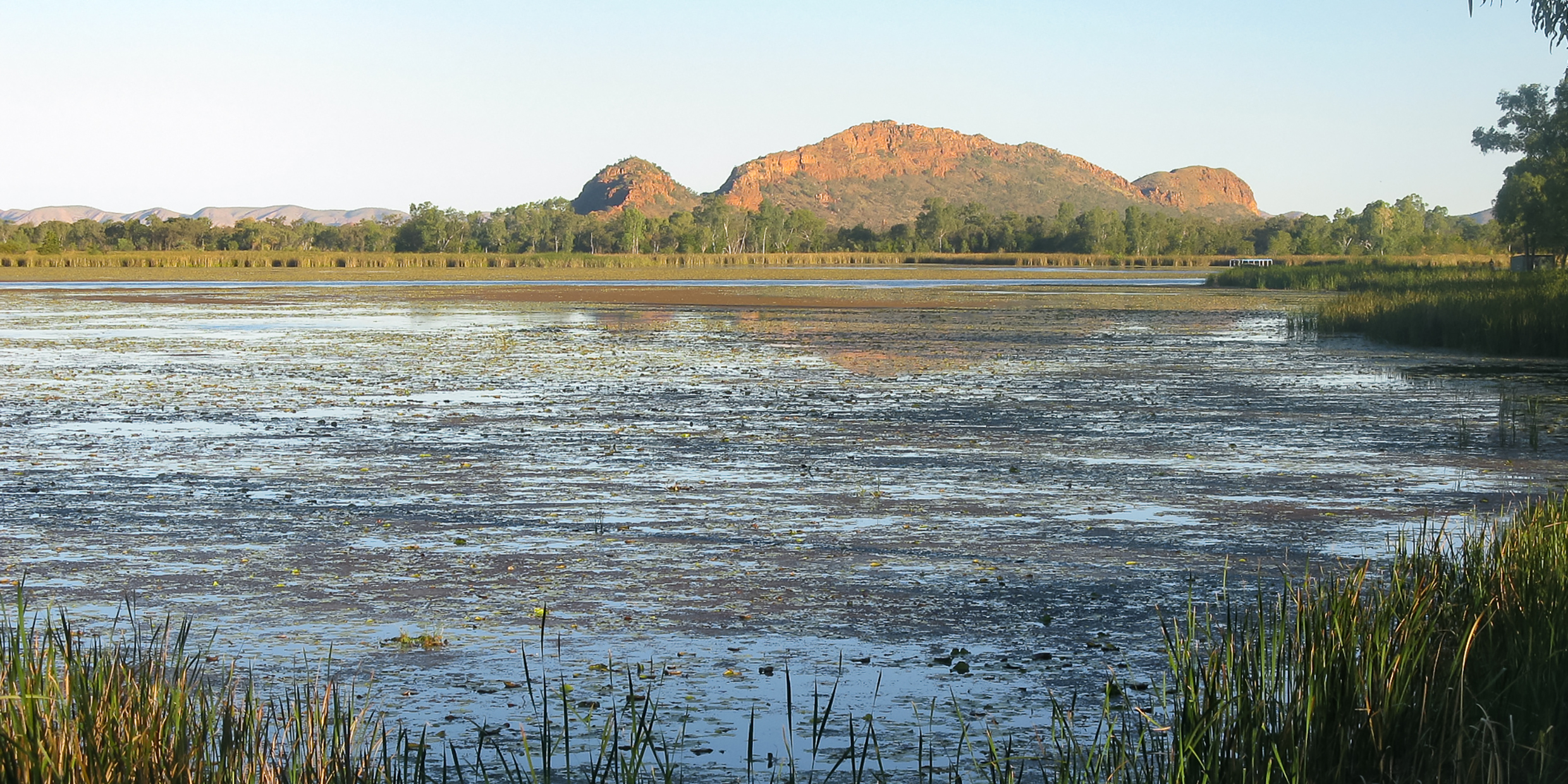Originally published 3 December 2002
My daughter, a geologist, gave me zebra stones for my birthday.
As I opened the package, I thought I had been given beautifully decorated ceramic tiles. The thin flat stones had all the qualities of human creativity — a zebra-stripe pattern in colors of chocolate and sand, rich in variation yet pleasingly rhythmical. Each of my three stones is different, but I did not doubt that they came from the same artistic hand.
My daughter set me straight. The “tiles” were sawn from natural stone quarried in the Kununurra district of Western Australia, then polished to a high gloss. They consist of fine-grained siltstone or claystone, 600 million years old, that has not been found in any other part of the world.
Geologists are not agreed on the origin of the zebra stripes. The chocolate bands are colored by iron oxide, and the lighter background is the color of typical silt. Perhaps layers of differently colored mud were deposited in a zebra pattern as we find them, under the influence of wind or water. Perhaps fluid sediments slumped and interleaved prior to solidification. Or perhaps water seeping through the deposits selectively leeched out the iron oxides.
Perhaps we’ll never know how nature made zebra stone, which is just as well, since it is the mystery of the stone’s apparently gratuitous beauty that makes it so interesting.
When the silts were deposited, Australia was located somewhere north of the Earth’s equator, part of a supercontinent known as Gondwana. The only life on Earth then was microscopic and unicellular. The land was bare of any green, and although it is not inconceivable that microorganisms played some role in coloring or leeching the deposits, it seems far more likely that nature used for her art no other instruments than law and chaos.
Law is built into the universe from the first moment of its creation, as propensities of matter and energy to behave in certain orderly ways. The laws of nature are sought by physicists, and everything we have learned suggests that the laws are the same throughout the universe. Why such laws should exist, and why they should be discoverable by the human mind, are great mysteries.
But nature is not rigidly predictable; if it were, it would be a boring universe indeed. All events may be lawful at some fundamental level, but in practice the webs of causality that shape the world are so multitudinous and tangled that it is impossible to predict the detailed outcome of any complex event. Chaos is a consequence of complexity.
It might also be true, as many quantum physicists believe, that unpredictability is built into the very fabric of creation, tempering lawfulness with uncertainty.
Everywhere we look in nature, we see both lawful pattern and chaotic variation — in the iridescent colors of butterflies, in the lapidary nuance of the backs of beetles, in the crystalline diversity of gemstones.
And in the stripes of zebra stone.
The geologist one day may find a satisfactory explanation for the zebra pattern; it is less likely that we will understand why the human mind finds the stones beautiful. All we can say is that we perceive beauty in a balance of order and disorder — as in the themes and variations of a Bach fugue, the off-kilter symmetry of Michelangelo’s David, or the repetitive but variable pattern of the zebra stones — perhaps because the human mind is itself a product of law and chaos.
It is intriguing that the sinuous interfolded patterns of my zebra stones bear a superficial resemblance to the ancient Chinese symbol of yin and yang. Law and chaos are the two creative principles of nature. No universe is possible without a generative friction between life and death, noise and silence, rigidity and fluidity, repetition and disruption, fire and ice.
In one of his essays, “The Colloid and the Crystal,” nature writer Joseph Wood Krutch wrote about these opposing forces in nature. “Order and obedience are the primary characteristics of that which is not alive,” he wrote. “Life is rebellious and anarchical.”
He was wrong to identify obedience and rebellion with non-life and life respectively. We now know, for example, that the inanimate six-pointed snowflake, so apparently lawful and static, is aquiver with molecular vibrations, and that delicate instabilities of these vibrations give snowflakes their infinitely variable forms. And life, we now understand, would not be possible unless nature had contrived elaborate molecular machinery to detect and repair any rebellious deviation of an organism’s genetic code.
The inanimate and the animate are equally products of law and chaos.
Still, Krutch was right when he said that “the ultimate All is not one thing but two.” And that’s why I’ll keep my zebra stones close to hand. They are pleasing to look at; they are also vivid reminders of nature’s two-handed principle of creativity.



